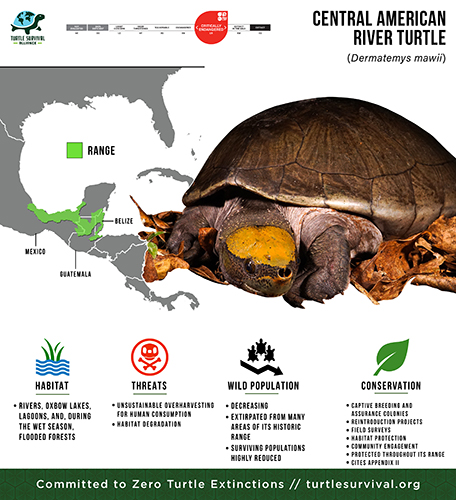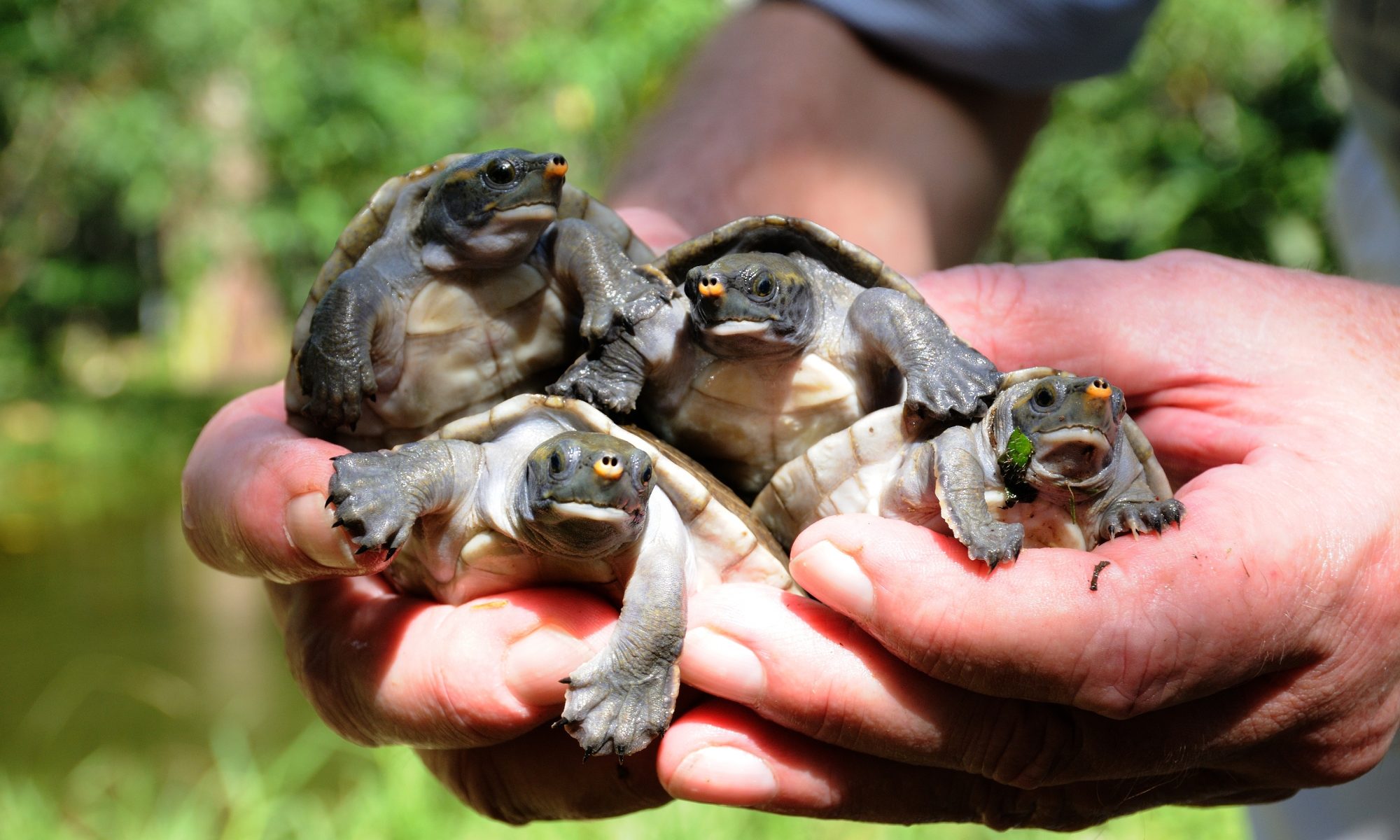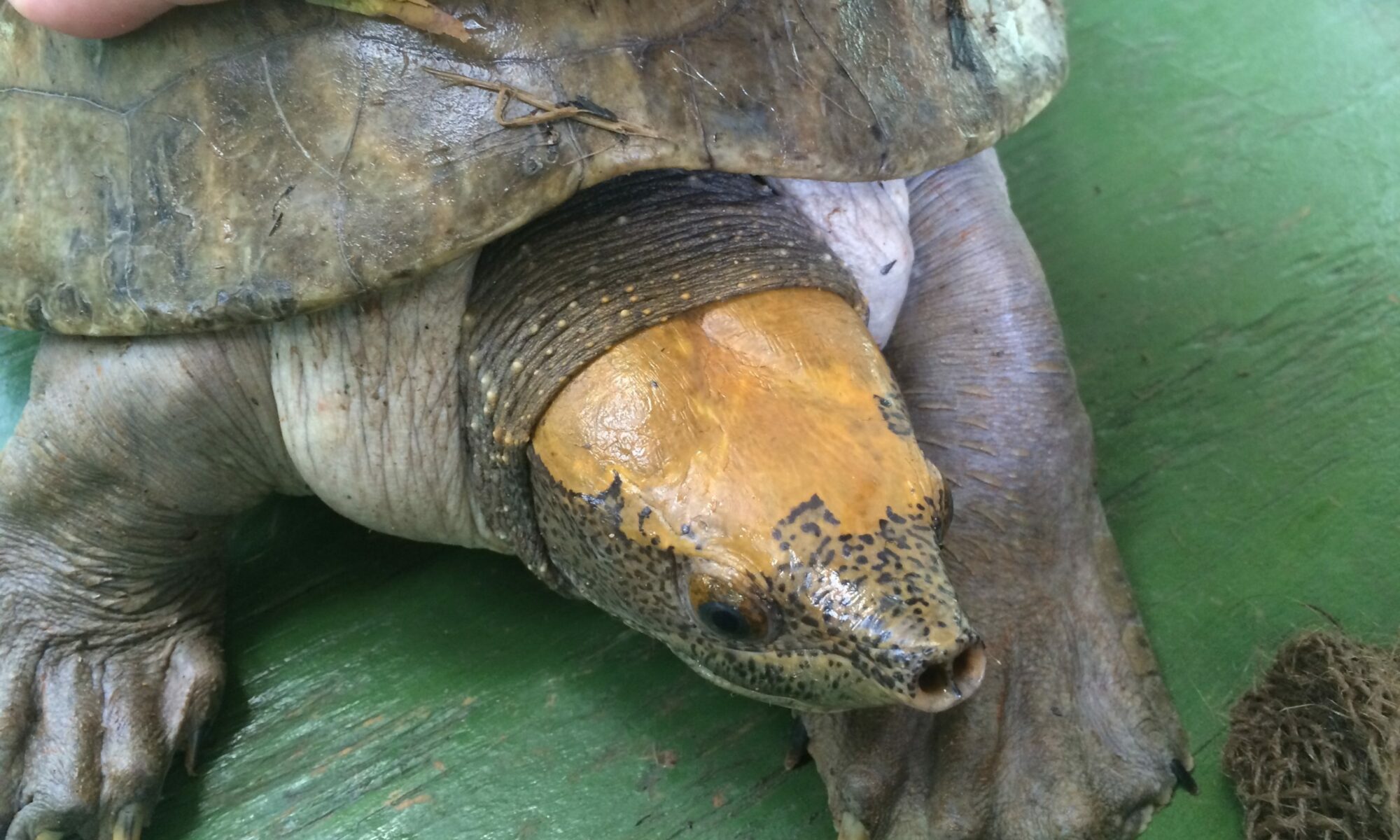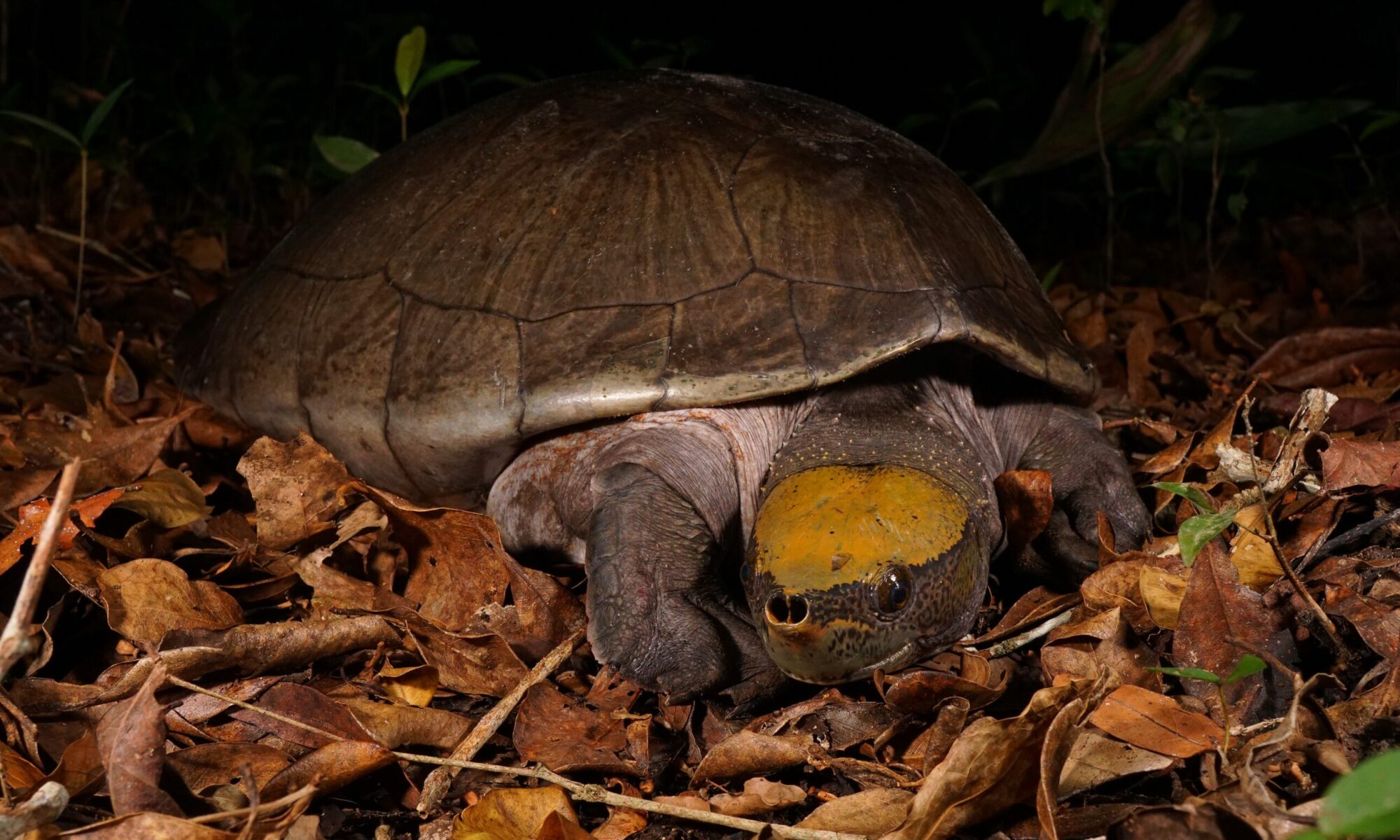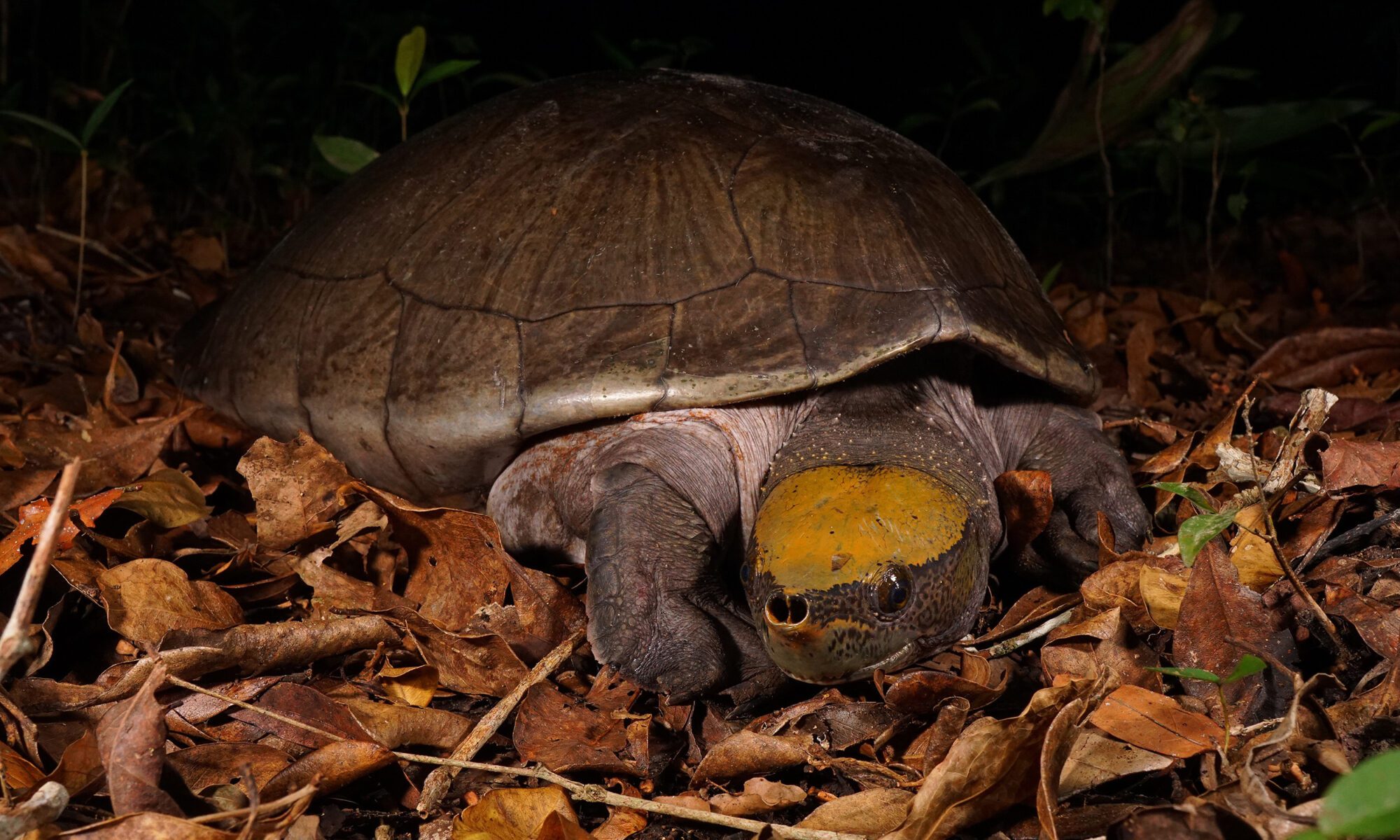
Highly vascularized papillae in its larynx allows the Hicatee to stay submerged for a virtually unlimited amount of time.
The Hicatee is a fully aquatic species that spends nearly 100% of its time in water. It is so adapted for an aqueous life that the Hicatee can barely move on land, let alone even hold its head up. They are primarily active during nocturnal and crepuscular hours, spending the day sleeping in deeper holes on the waterbody bottom. All life stages of this species are herbivorous, feeding on detritus, aquatic vegetation, and overhanging leafy matter and fruits from riparian vegetation. During the wet season, the Hicatee will expand its movements into the flooded forests adjacent to its primary waterbody. During the dry season, they will retreat to the deepest pockets of the water column, sometimes becoming trapped in oxbows or ponds, before they can return to their home river or lake. Because of their inability to make overland treks, they are relegated to stay in these pockets of water until the next wet season.
